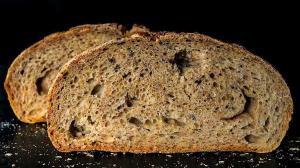ingredients
sourdough starter (see my recipe here) :
- 125 grams (7 ½ tbsp or almost ½ cup after stirring) double-fed sourdough starter (100% hydration) *or see my recipe here
water :
- 250 grams (1 cup + 2 tsp) natural spring water warmed to 25°C
- optional : add 25 grams or 2 tbsp of wheat berries to infuse the water for 24 hours minimum + 25 grams or 1 ½ tbsp extra water (to compensate for the water absorption by the wheat berries)
flours :
375 grams (3 cups) flour mix :
- 200 grams (1 ½ cups + 1 tbsp) white all-purpose flour
- 100 grams (¾ cup + 1 tbsp) wholewheat flour
- 50 grams (¼ cup + 2 tbsp) rye flour
- 25 grams (2 ½ tbsp) buckwheat flour
- 7,5 grams (1 ½ tsp) fine sea salt
- 15 grams (3 tsp) extra water (to dilute and melt the salt)
- optional : add the pre-soaked and bloated wheat berries/grains (that were in the water to infuse it) to the dough
- *optional (if you’re nervous) : add 0,25 gram (1/16 tsp) or up to 0,5 gram (1/8 tsp) dry yeast granules to the dough when adding the sourdough starter
















